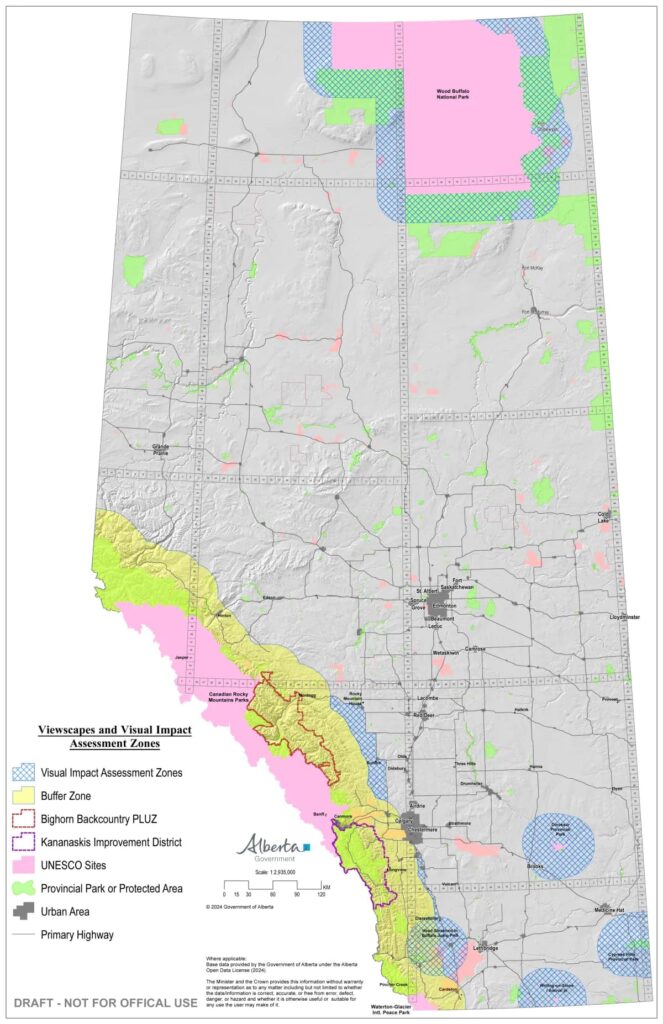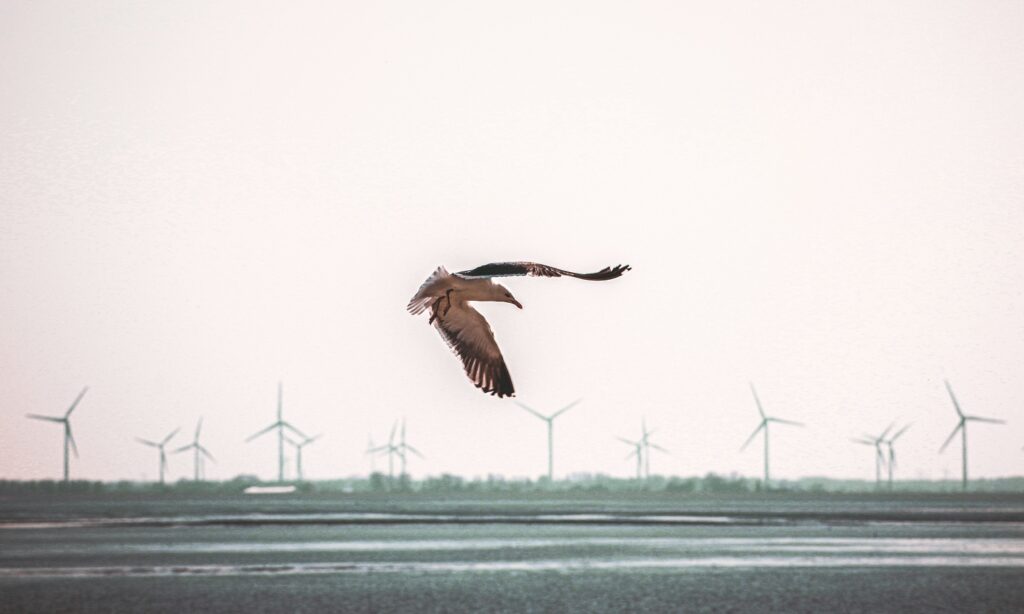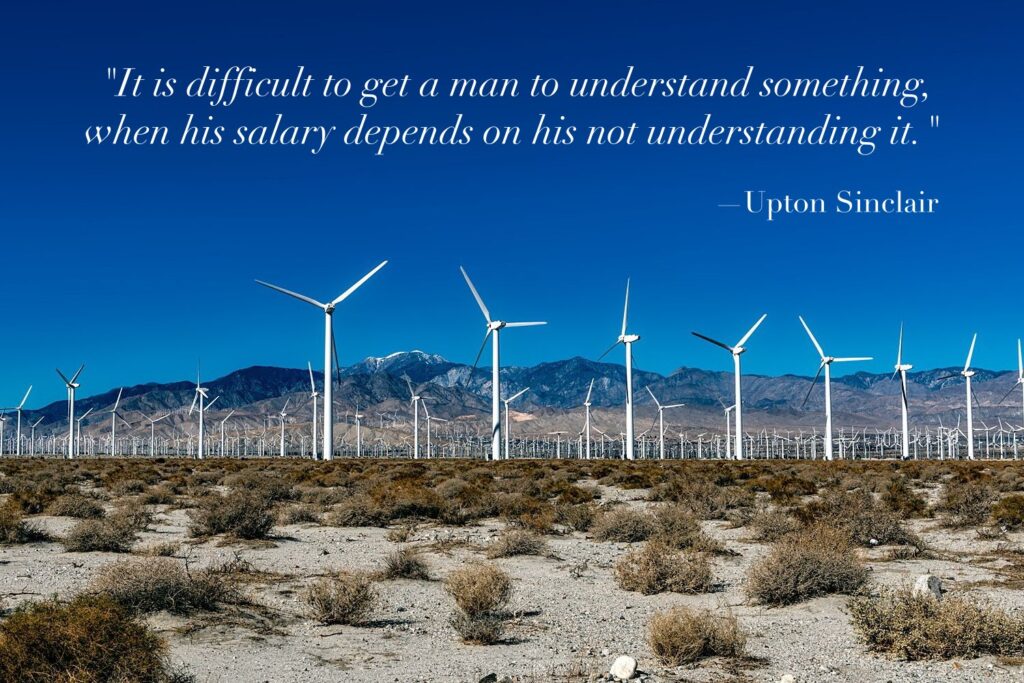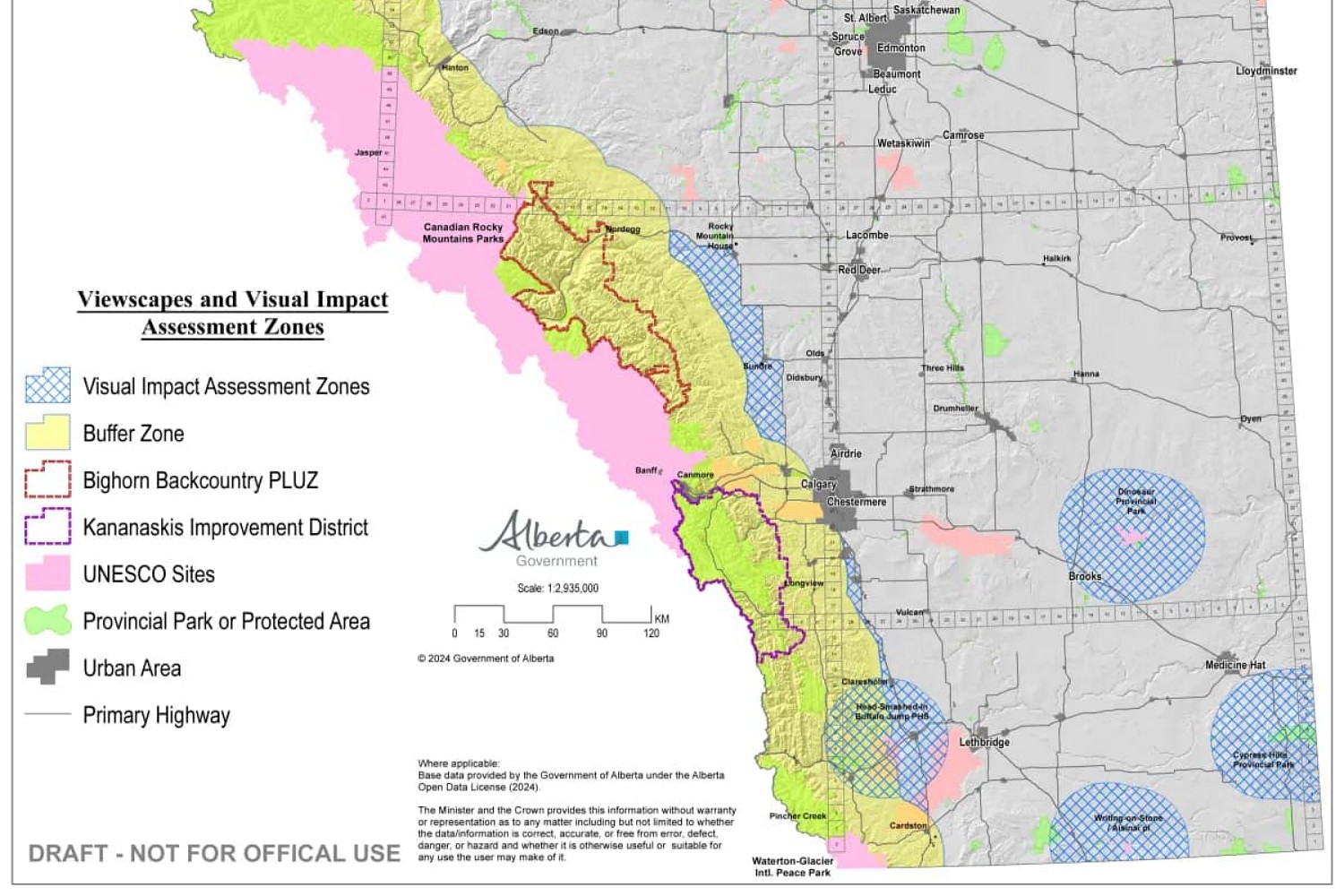Most urban dwellers in this province have no idea the living nightmare many of their counterparts in the countryside are going through. I’m speaking of those rural Albertans who either have, or have learned that their quiet and beautiful landscapes have been slated for massive industrial wind turbines. This is not hyperbole. Some have told us they wake up in the middle of the night stressing over the possiblity their landscapes will be altered forever. Those experiences are being lived all over the world as governments forfeit logic in order to pave the way for a technology that is costly, unreliable, and environmentally lethal to birds, bats, insects and human and animal health. And the drop in property values has been devastating, despite the wind industry’s fallacious claims.1

With the Alberta Government’s release of a draft map showing where turbines will be prohibited, the nightmare is anything but over. For those living within 35km of the province’s mountain ranges, any turbine projects slated within that buffer will be cancelled. But that leaves Albertans all across the province, including those in the gorgeous Peace River region, those living on the North Saskatchewan River, and elsewhere, completely vulnerable to heartless wind corporations.
I’m talking to politicians and residents alike who are angry after seeing this map. For one, they’re perplexed after hearing the Premier speak of how “pristine viewscapes” need to be protected and that one cannot build a wind turbine ‘in your neighbour’s backyard’:
We have a duty to protect the natural beauty and communities of our province.
Premier Danielle Smith, Press Conference, February 28, 2024; YouTube
If beauty is in the eye of the beholder, clearly, the natural beauty and communities worth protecting, according to this map, are only those who happen to see mountains out of their windows — not rivers, lakes, rolling plains or even provincial parks.
I was excited to see the Premier stepping forward to protect the true beauty of this Province. However, there seems to be a bit of back peddling here. I truly hope that the Alberta Government will continue to look forward to the future and protect our agriculture, tourism, and the natural beauty of this vastly diverse province.
Chris Habiak, Wind Concerns team member, March 15, 2024

Now, those who try to compare a wind turbine to say an “orphaned well”, pumpjack, or even solar array are utterly clueless as to the imposition massive turbines actually are. You can’t see a pumpjack for 50km, but you can a wind factory.2 But the ugly spectacle of dozens of over 200m high turbines and their blinking lights is hardly the sum of it. They also kill large migratory birds, they decimate bat and insect populations. They are shown to cause deformities in horses and cattle. And they are now proven to harm people who live within 15km of them. This is a disaster — but rural Albertans have little say against the juggernaut of the rubber-stamping Alberta Utilities Commission (AUC).
Tone Deaf Industry
Indeed, the AUC is apparently oblivious to the difference between an industrial wind plant and a row of pump jacks, according to the Pembina Institute, an anti-oil/renewable energy “think tank”.
The commission suggests that, should the government find it in the public interest to pursue ‘no-go’ restricted viewscape zones, any prohibition on development intended to achieve viewscape preservation be industry agnostic and apply equally to all forms of development.
Jason Wang, analyst, Pembina Institute, March 15, 2024; CBC News
Perhaps the most tone-deaf remark comes from Evan Wilson of the Canadian Renewable Energy Association:
There is something quite powerful about a view where you can see all of the different types of energy in Alberta coexisting with Alberta’s beauty behind. To see a pumpjack, a wind turbine, a solar panel and the mountains is a truly Albertan vista.
March 15, 2024; CBC News

That may be the most ludicrous sales pitch yet for renewable energy.
Chris Habiak’s farmhouse was slated to be surrounded by 5 huge turbines until that project, which he and dozens of other families fought against, was cancelled. He’s now joined Wind Concerns to stop a project slated for the North Saskatchewan River south of Elk Point.
I would never consider a view of pumpjacks, solar panels, and wind turbines obscuring a pristine viewscape, like the mountains, “beauty.” Nor, I believe, would the rest of my fellow Albertans. I’ve never heard of anyone in their leisure time traveling to the heart of an industrial park to tour and site-see. We vacate the cities and towns to reconnect with the true beauty of this world where we can look to the sky for stars — not flashing lights on turbines taller than the Calgary Tower.
Chris Habiak
Angela Tabak of Riplinger Wind Concerned Citizens group agrees.
Evan Wilson of the Canadian Renewable Energy Association is clearly biased and has a very different vision of what Alberta should look like from what most Albertans and the millions of tourists who come from all around the world, to visit these vistas every year, have.
Angela Tabak, Riplinger Wind Concerned Citizens group, March 15, 2024
That said, the draft map released today was a huge relief for Tabak whose region was designated for an industrial wind plant on the Waterton Eastern Slopes near its National Park. That project now lies within the 35km restricted “No-Go Zone”. But Tabak is also concerned for future generations and the impacts of erecting turbines across the province:
We recognize the beauty that exists all across this amazing province. We strongly recommend that the government require strictly regulated Visual Impact Assessments on all proposed renewable energy projects, no matter where they are located in the province. This will ensure that all residents of the province are treated with fairness and respect and that a thorough evaluation of each project is made.
Indeed, municipalities in Northern Alberta are not taking kindly to the province’s apparent snub of the beauty of the Lakeland region. Wind Concerns has spoken to several councilmen in various regions, and a letter is being prepared to ask the Government to consider the beautiful tourist area, including the North Saskatchewan River which was just declared a national Heritage River in February, “off-limits” to industrial wind. Wind Concerns will be releasing a copy of that letter shortly.
Finally, it has to be said… Alberta is sitting on the world’s third-largest oil reserves, some 166 billion barrels of oil.3 We have all the infrastructure — plants, pipelines, refineries, distribution centers, etc. — in place. It is sheer insanity to transition to an environmentally harmful resource that requires huge amounts of fossil fuels to manufacture, transport, and install in the first place, and that is completely unreliable: shutting off when it’s too cold (this is Alberta for Pete’s sake!) or shutting down when there’s no wind. The politically correct ideology driving renewables is almost criminal, given the waste, destabilization of grids, and enormous impacts they have on economies. Natural gas, nuclear, hydro… they have not only sustained our provinces but have helped them to prosper.
Somebody, please wake Alberta up from this nightmare.
- cf. Property Punishment[↩]
- “The facilities were found to be visible to the unaided eye at >58 km (36 mi) under optimal viewing conditions, with turbine blade movement often visible at 39 km (24 mi).” from “Wind Turbine Visibility and Visual Impact Threshold Distances in Western Landscapes ”, Sullivan et. al[↩]
- natural-resources.canada.ca[↩]
Mark Mallett is a former award-winning reporter with CTV Edmonton and an independent researcher and author. His family homesteaded between Vermilion and Cold Lake, Alberta, and now resides in the Lakeland region. Mark is Editor in Chief of Wind Concerns.


